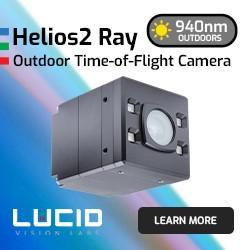The Internet of Robotic Things (IoRT), Greatly Expanding Capabilities and Business Opportunities, According to ABI Research
The incorporation of the robotics aspect into the wider IoT transforms the landscape currently dominated by business models built upon passive interaction to dynamic and physical relationships between the digital and physical world.
OYSTER BAY, N.Y.---ABI Researchs recent publication The Internet of Robotic Things, describes the many ways Internet of Things (IoT) infrastructure and services intersect with robotic technologies to deliver advanced functionality, along with novel applications, and new business and investment opportunities. This research study introduces the concept of the Internet of Robotic Things (IoRT), where intelligent devices can monitor events, fuse sensor data from a variety of sources, use "intelligence" to determine a best course of action, and then act to control or manipulate objects the physical world, and in some cases while physically moving through that world. The incorporation of the robotics aspect into the wider IoT transforms the landscape currently dominated by business models built upon passive interaction to dynamic and physical relationships between the digital and physical world.
According to Dan Kara, practice director, robotics at ABI Research, "Currently, most IoT initiatives are focused on using connected devices with simple, passive sensors to manage, monitor and optimize systems and their processes, usually as part of supply chain optimization efforts. The combination of advanced sensing, communication, local and distributed processing, and actuation take the original vision for the IoT to a wholly different level, and one that opens up whole new classes of opportunities for IoT and robotics solution providers, as well as users of their products."
The Internet of Robotic Things report:
*Describes the characteristics of robotics technologies that distinguish them as a separate, unique class of IoT objects, and one that differs considerably from the common understanding of IoT edge nodes as simple, passive devices.
*Reveals how the key features of robotics technology, namely movement, mobility, manipulation, intelligence and autonomy, are enhanced by the Internet of Things paradigm, and how, in turn, the IoT is augmented by robotic "objects" as edge devices.
*Illustrates how IoT and robotics technologies combine to provide for Ambient Sensing, Ambient Intelligence and Ambient Localization, which can be utilized by new classes of applications to deliver value. Promising markets and applications are be highlighted.
This report is part of ABI Researchs Robotics, Automation and Intelligent Systems Market Research (https://www.abiresearch.com/market-research/service/robotics-automation-and-intelligent-systems/). This service offers informed and actionable quantitative research and qualitative analysis to solution providers and end-users so that they may increase opportunities and minimize risk when employing robotics and intelligent systems technologies to develop entirely new markets and product categories, and enhance existing product lines.
ABI Research provides in-depth analysis and quantitative forecasting of trends in global connectivity and other emerging technologies. From offices in North America, Europe and Asia, ABI Researchs worldwide team of experts advises thousands of decision makers through 70+ research and advisory services. Est. 1990. For more information visit www.abiresearch.com, or call +1.516.624.2500.
Featured Product

